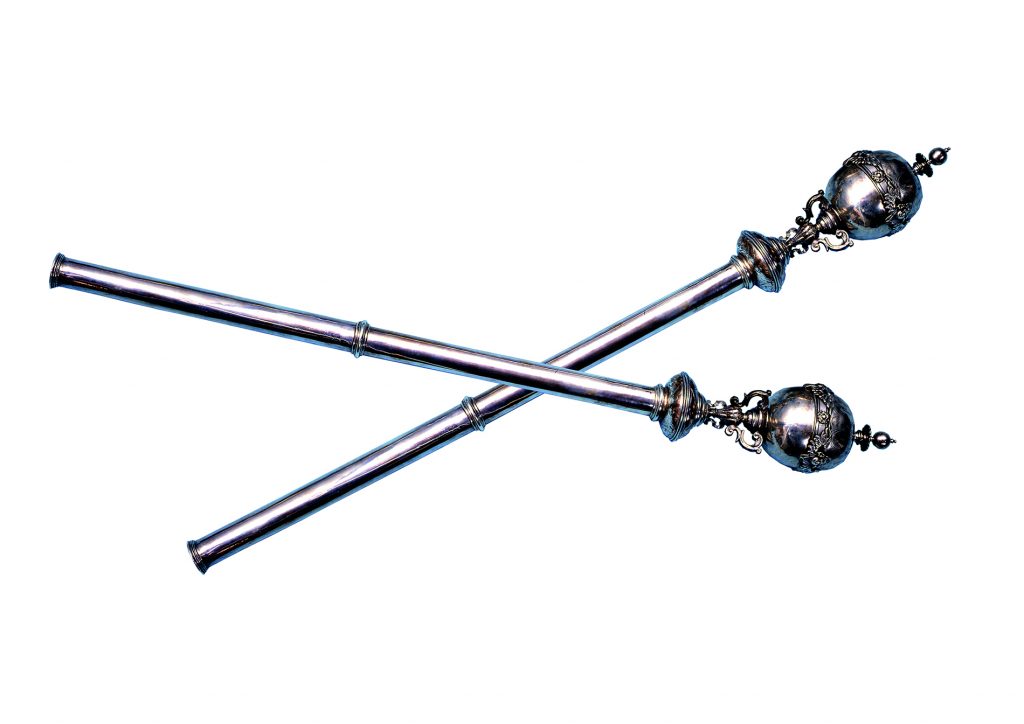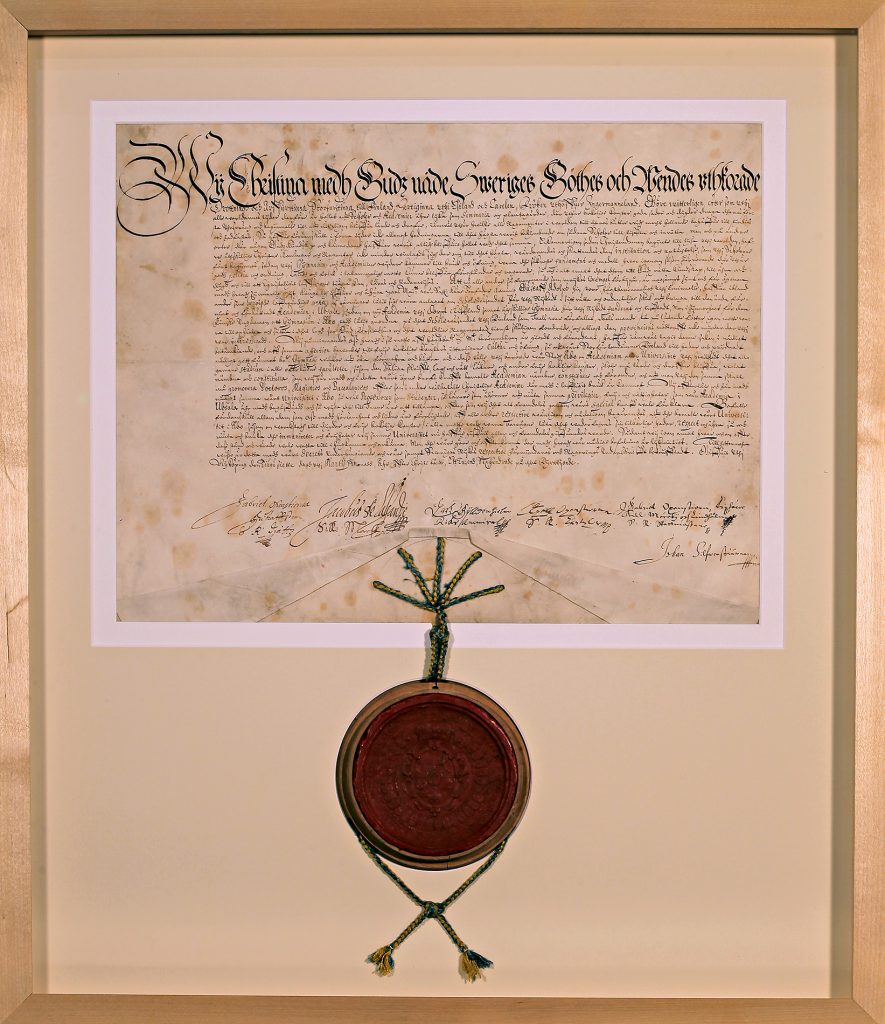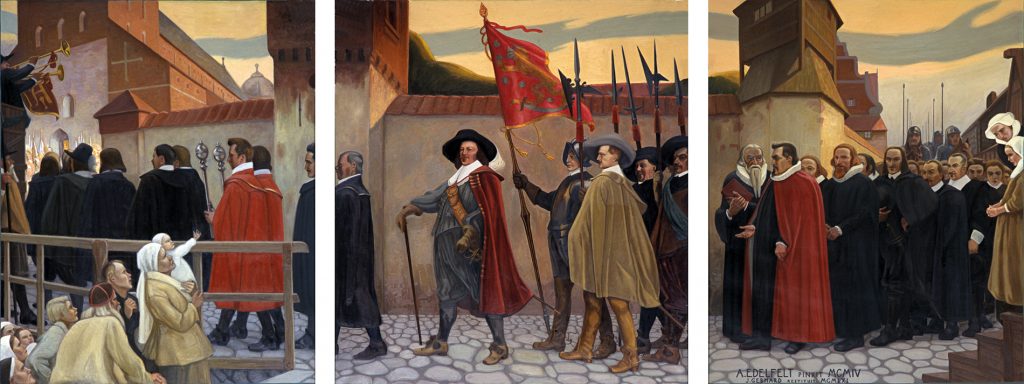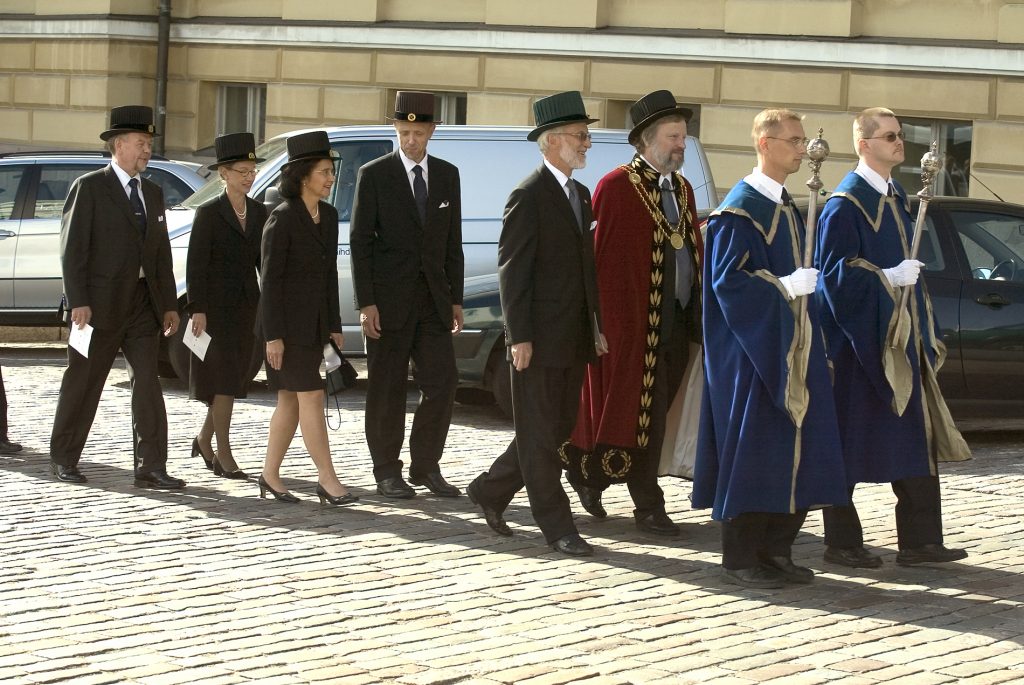A new academic year has again begun at our University. To mark the occasion, the Helsinki University Museum’s Object of the Month blog presents the University’s silver sceptres.

Historical sceptres
The silver sceptres date back to 1640, the period of the Royal Academy of Turku. The Academy was the third university in the Swedish realm (of which Finland was then part) after the University of Uppsala and the University of Tartu. The Academy’s charter states:
We have […] seen fit […] for the better cultivation and practice of liberal arts skills, for the honour and beautification of our Grand Duchy of Finland, to set up and establish in the abovementioned town of Turku an Academy, or University, to serve as a place for teaching and pursuing general studies at all permitted Faculties in fields such as the Holy Book, law and medicine, and other written skills, and consequently we decree, establish and set up with this open letter the abovementioned Academy and that Doctors, Masters and Bachelors be conferred there, as it has become commendable practice at other well-organised Christian Academies.

Because Queen Christina was underage, her regency council signed the charter in her name on 26 March 1640, and the Academy’s solemn inauguration was celebrated just a few months later in the summer. Mikael Beck, a goldsmith from Stockholm, made the silver sceptres for the Academy’s inauguration. The sceptres have smooth, round stems and slightly oval balls at the ends. The balls feature an ornamental ring with an angel motif.
Solemn inauguration of the Academy
The inaugural ceremony of the Royal Academy of Turku included impressive processions, a church service, music and a gun salute fired from Turku Castle. The processions were attended by all dignitaries in Turku, from bishops to professors and from Governor-General and Academy Chancellor Per Brahe to the town council and students. The participants carried not only the brand-new sceptres, but also other academic insignia, such as the rector’s cape and the Academy’s keys, charter, seal and register. The protocol was based on traditions imported from the oldest universities in Europe. The beautiful weather drew an abundance of local residents to follow the spectacle.

Symbols of power still in use
The sceptre is an ancient symbol that often depicts secular power. The best-known sceptres symbolise the ruler’s power. At coronations, a crown is placed on the ruler’s head and a sceptre and an orb in his or her hands. The round head of the sceptre symbolises the pervasiveness of the ruler’s power. The Academy’s silver sceptres are also emblems of power that emphasised the Academy’s autonomy and jurisdiction. The Academy (later the University) had the right to investigate and pass judgment on offences and misconduct if the suspected perpetrators were students or staff. Students were monitored by beadles. The University’s internal jurisdiction was not abolished until the late 19th century when the principle of equality of all citizens superseded earlier privileges.
The Academy’s sceptres are exceptional museum objects. Often, museum collections can only be viewed behind glass. In fact, these sceptres are also usually kept in a separate glass case, as one of the star attractions of our main exhibition. However, the glass case is opened and the sceptres taken out when the University of Helsinki holds important celebrations. As was the case hundreds of years ago, the sceptres are still carried today in the processions marking the beginning of the academic year and at conferment ceremonies. Beadles have the honour of carrying the sceptres. In Helsinki, the role of beadles has traditionally belonged to the porters of the University’s Main Building. Wearing their blue capes and carrying the sceptres, the beadles make a distinguished impression as part of our University’s festive traditions.

Katariina Pehkonen, curator
Translation: University of Helsinki Language Services.
Sources:
Klinge, Matti: Helsingin Yliopisto 1640–1990: 1. osa, Kuninkaallinen Turun Akatemia 1640–1808. Otava, 1987
Biedermann, Hans and Lempiäinen, Pentti: Suuri Symbolikirja. WSOY, 1993
Beadle Tuomo Jumisko, interview in 2020
